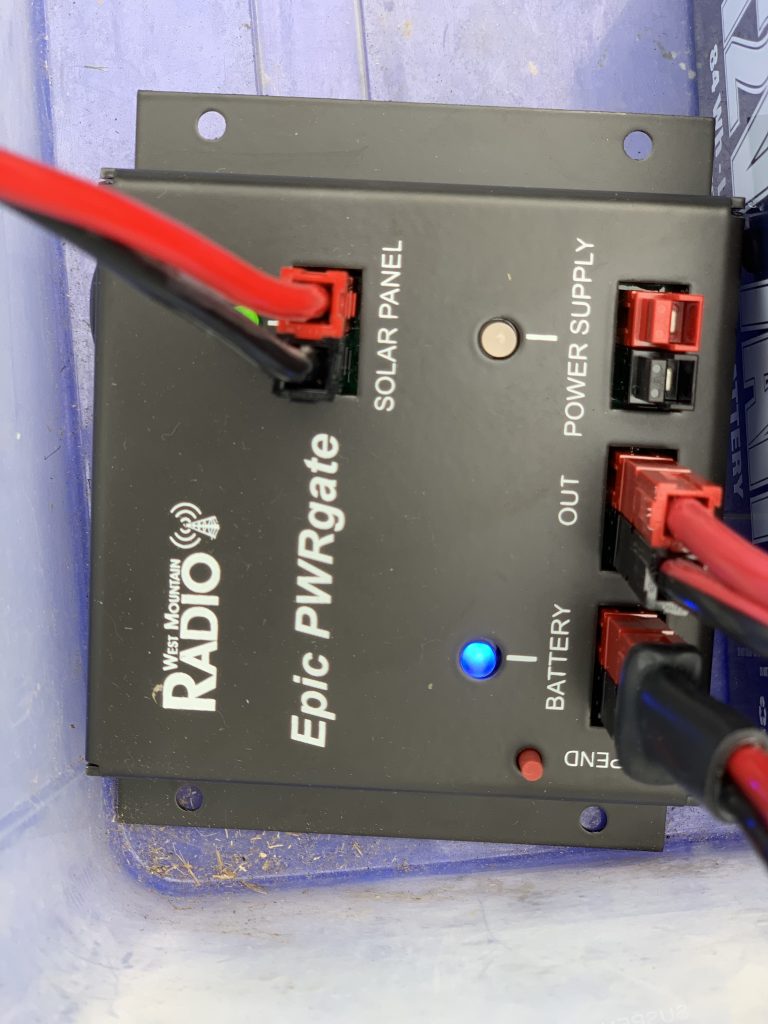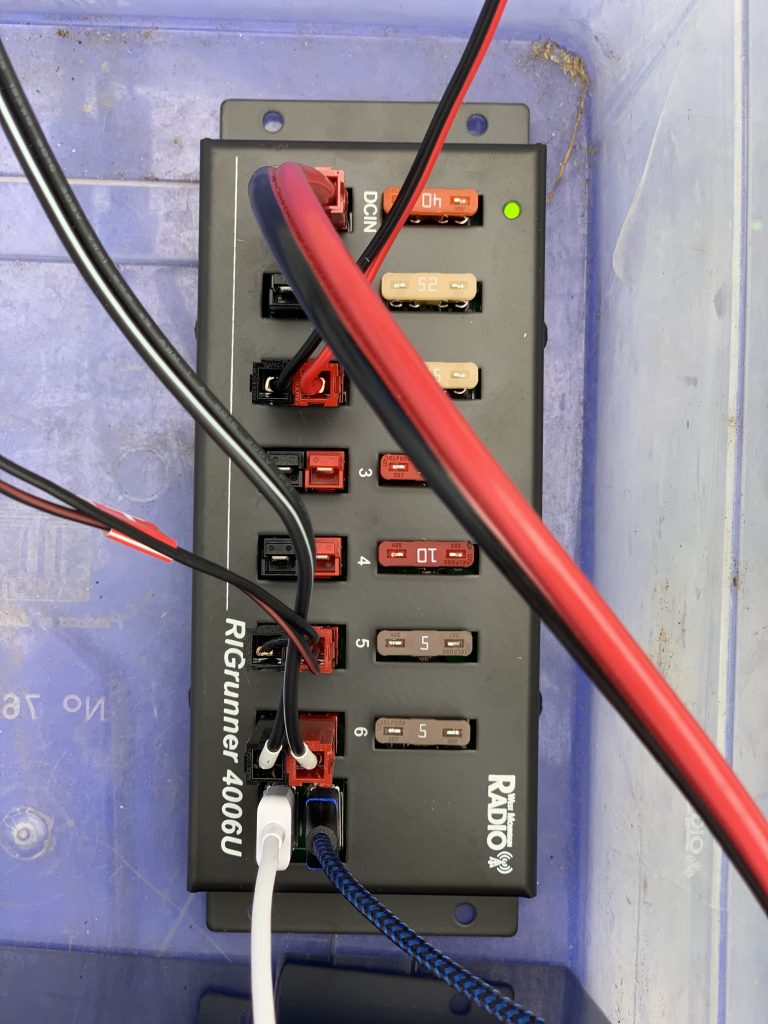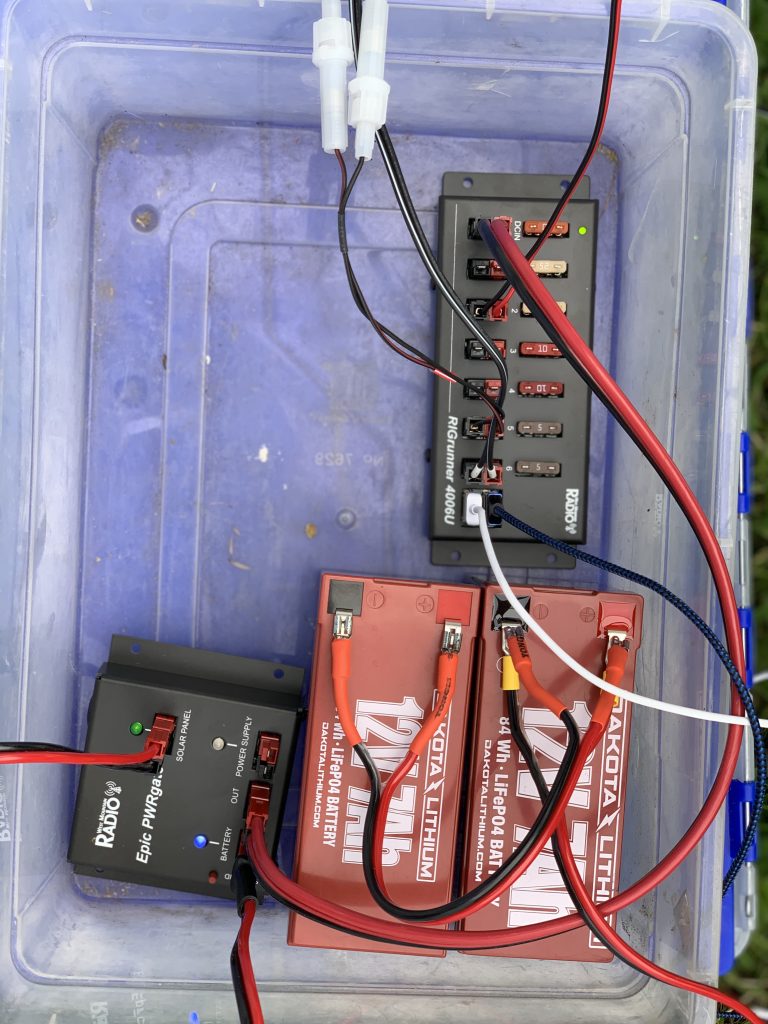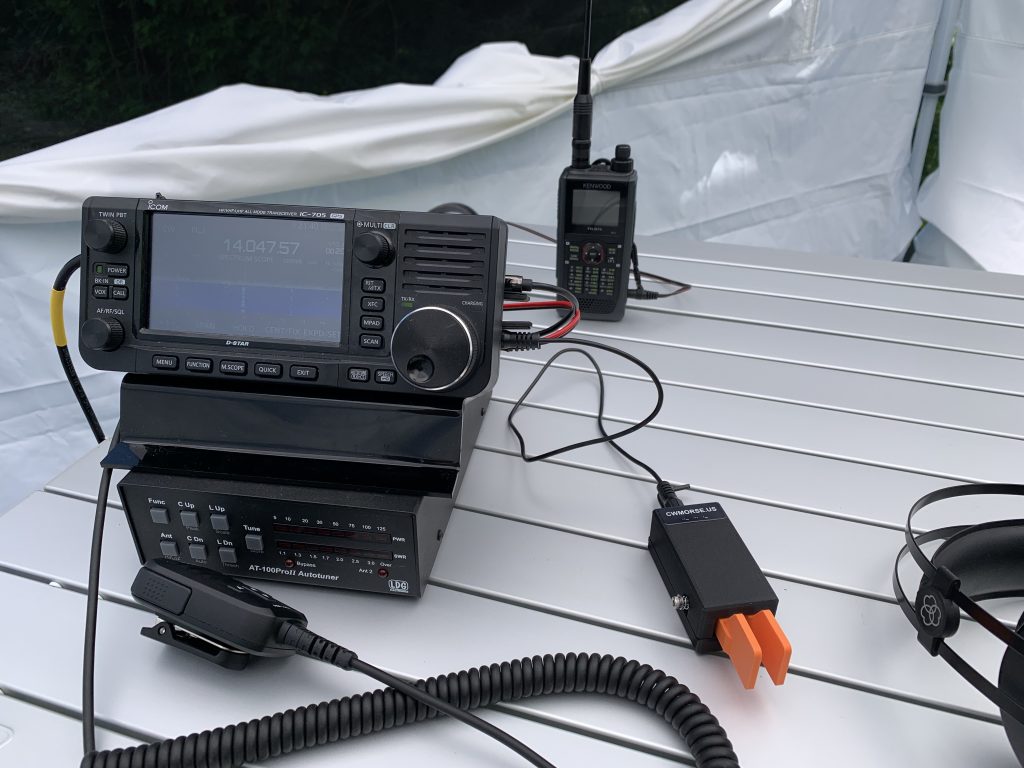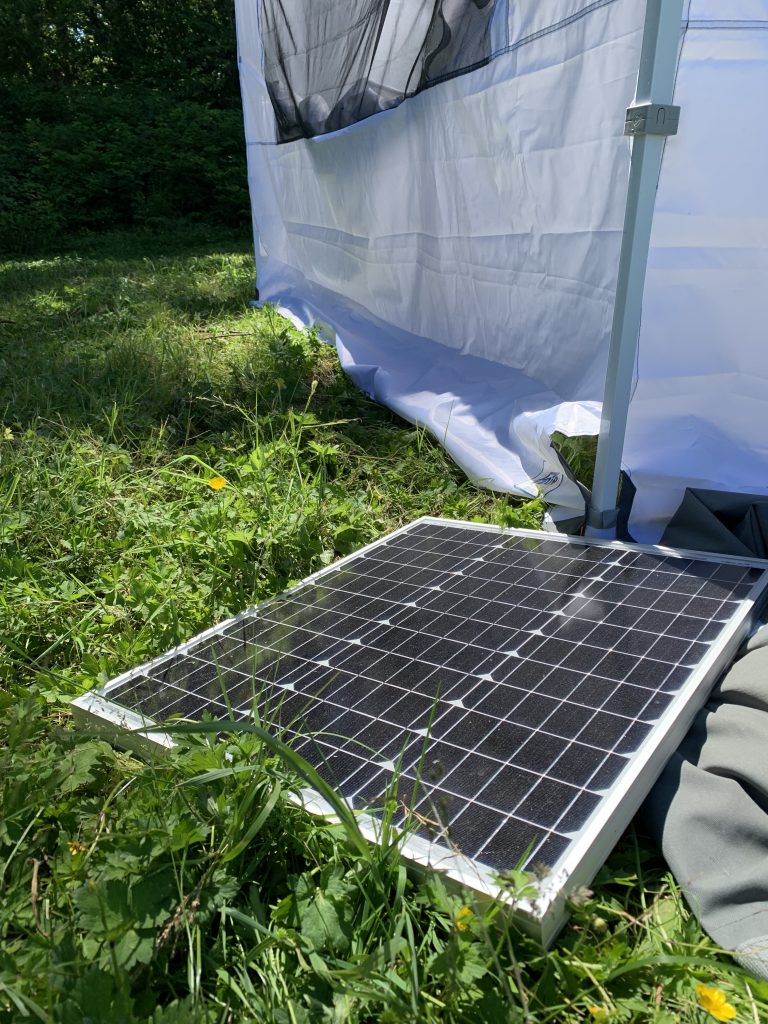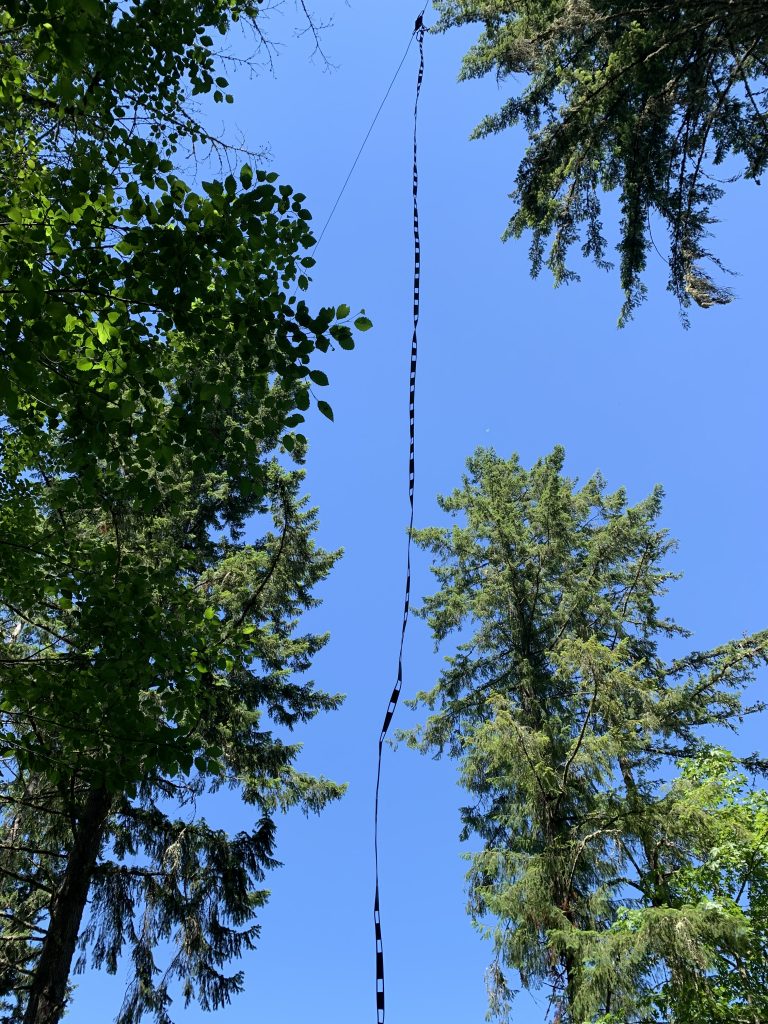For Field Day 2021, my goal was to simulate operating with minimal gear which could be deployed under emergency conditions in the field. This year I opted to operate QRP using the Icom 705 running 5 Watts. This was connected to 2 Dakota 7Ah Lithium batteries wired in parallel giving me 14 Ah to both power the radio keep the radio’s internal battery charged. The battery pack was connected to a West Mountain Radio Epic PowerGate with a Renogy 50 watt solar panel to maintain charge. The PowerGate connected to a RigRunner 4006U to distribute the 12VDC to my radio and tuner using Anderson Power poles. I could also charge my tablet or phone via the built in USB. I initially planned to have my ID-51A2 with me for FM coverage while operating HF and also as a spare battery for the IC-705 since they share battery packs. I opted instead to bring my Kenwood TH-D74a to monitor APRS and local repeaters, although ended up not using it.
I set up on the edge of a wooded area on my property which provided a bit of elevation and some tall trees from which to string an antenna. I used my G5RV, although next year I will opt for a more efficient radiator, probably a linked dipole or fan dipole. I set up my E-Z Up in an area where there was sufficient sunshine for the solar panel, but also some shade due to the extreme heat expected. (It reached 99 F on Sat, 101 on Sun)
My neighbor Jordan, KG7IIK and his son came over to observe for a while and watched as I attempted to work SSB. I think I made 4 contacts during their visit due to conditions and my limited set-up. It was tough to get through with the higher power stations and fluctuating conditions. It did give us time to talk radio and I passed on some training material that may help him upgrade. That evening I returned to operate CW where the S/N ratio would help me make more contacts (and points) and I operated the rest of the weekend CW for this reason.
Lessons Learned
On Sunday, I saw that the battery was running low on the 705. I hadn’t payed much attention to the icon on the display to this point. When I checked, it turned out I hadn’t fully seated the Powerpole connection connecting the radio to the RigRunner. Once I remedied this, there was no power issue at all. I was impressed at how long the internal battery pack lasted considering. I did have GPS, Bluetooth and WIFI, disabled, and used headphones which all helped reduce current draw. I could have turned off the display and may have been able to operate the whole time on the internal battery pack. My ID-51a2 uses the same battery, so if I had brought it fully charged, I could have swapped and operated with a more minimal setup. The biggest change I will make is with the antenna. I need to have a tuned dipole ready so I won’t need the tuner or at the very least have better SWR and efficiency. Other potential changes would be to have longer cables to move the solar panel further away – or more accurately, move the shelter out of the sun. The weather was definitely a challenge and limited the time I operated. Next year I may try to operate with less gear and may go to a more remote location to simulate a “bug-out” scenario where they may not be time to pack as much gear and comfort equipment. I enjoyed the challenge and even with the heat and limited station, will count this as a success. And in the spirit of my last post, the score doesn’t matter (especially since it’s supposedly not a contest), but instead, the ARRL reminds us the objective is:
To contact as many stations as possible on the 160, 80, 40, 20,15 and 10 Meter HF bands, as well as all bands 50 MHz and above, and to learn to operate in abnormal situations in less than optimal conditions.
http://www.arrl.org/field-day
Done and done! 73

